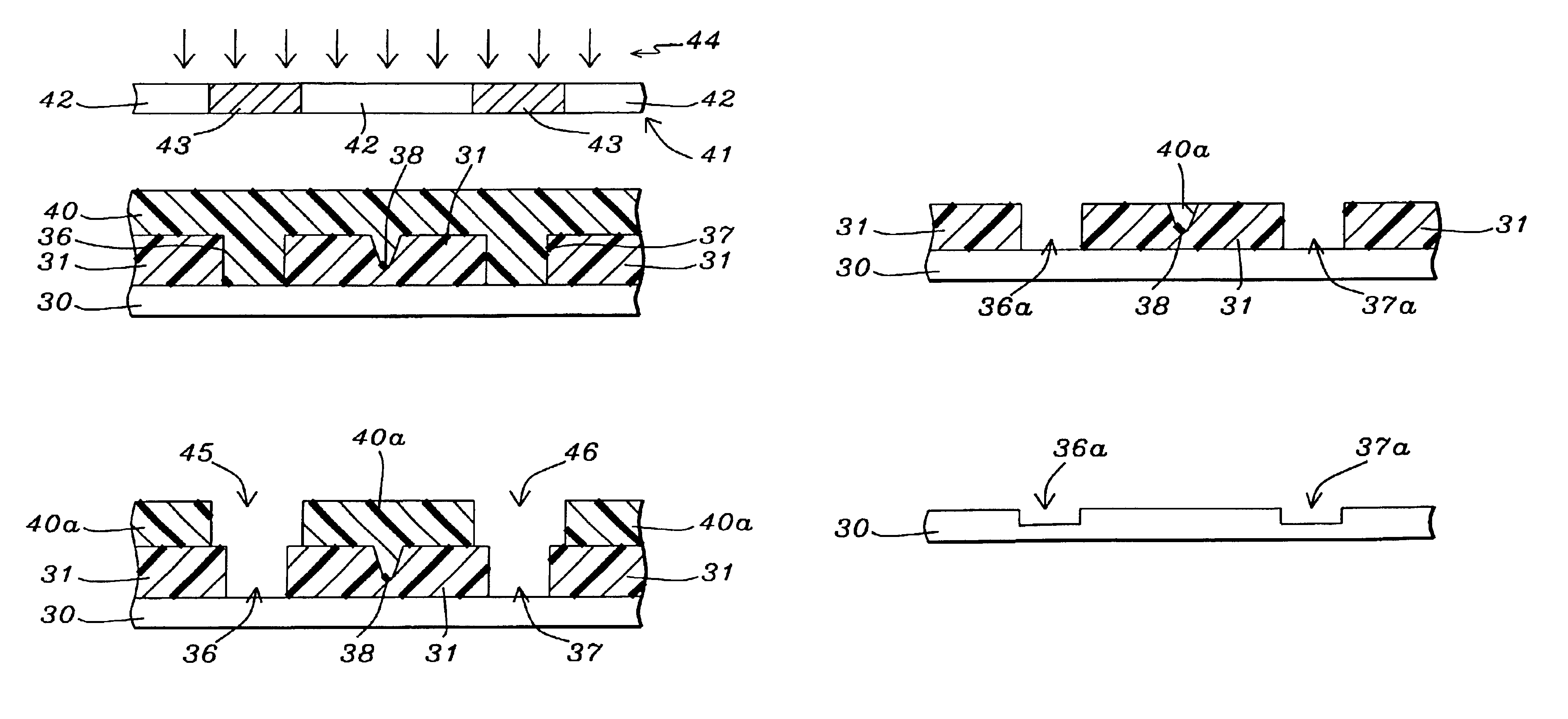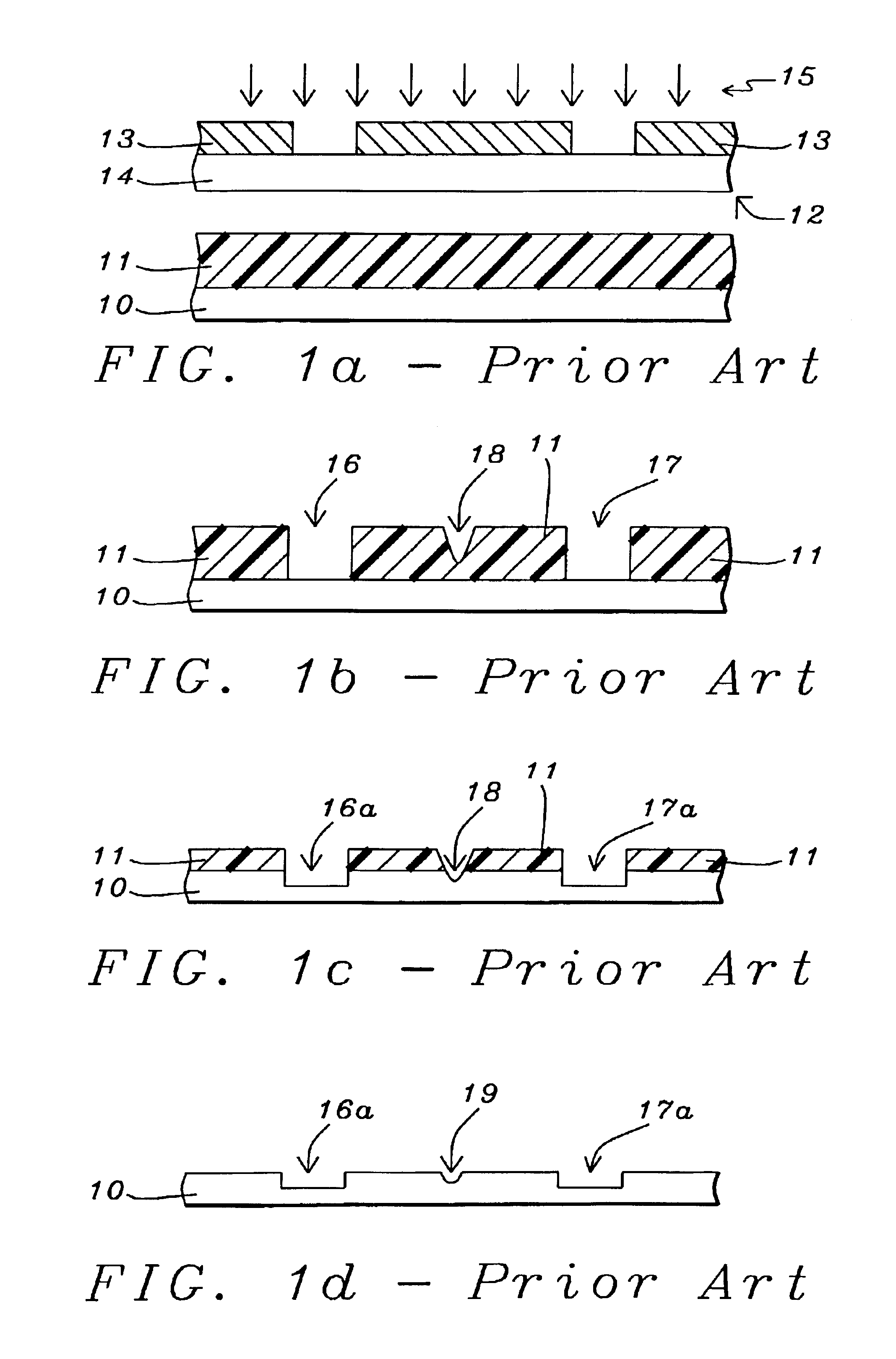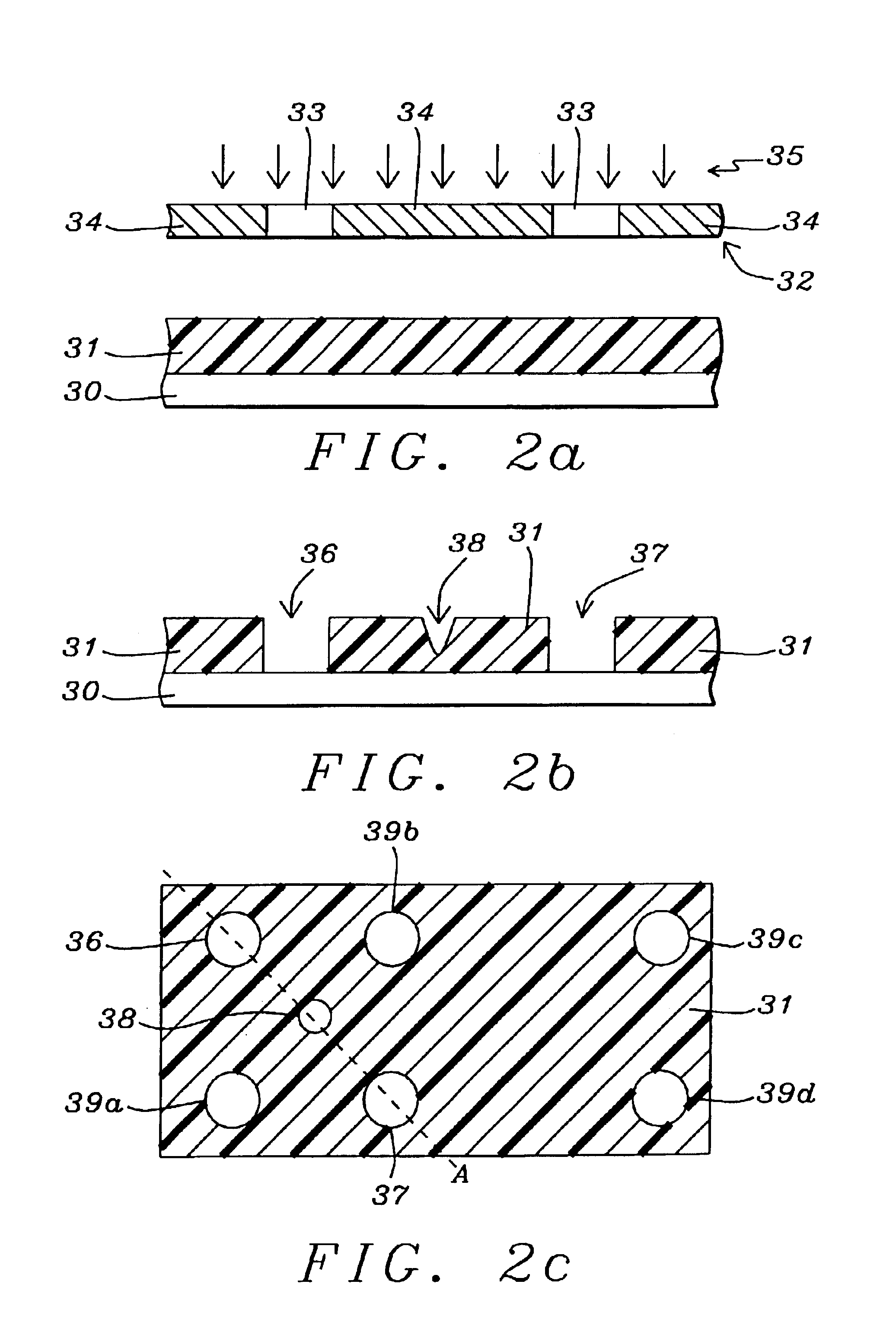Method for preventing the etch transfer of sidelobes in contact hole patterns
- Summary
- Abstract
- Description
- Claims
- Application Information
AI Technical Summary
Benefits of technology
Problems solved by technology
Method used
Image
Examples
first embodiment
[0031]In the first embodiment as illustrated in FIGS. 2a-2f, a substrate 30 is provided that typically contains active and passive devices in a substructure that is not shown in order to simply the drawing and direct attention to the present invention. Optionally, an anti-reflective coating or ARC (not shown) is formed on substrate 30 in order to control reflectivity during a subsequent photoresist patterning process. The ARC can be an inorganic material like silicon nitride or silicon oxynitride that is deposited by a chemical vapor deposition (CVD) process or the ARC can be an organic layer that is obtained by spin coating and baking a commercially available material. A typical thickness for an ARC is between about 300 and 1000 Angstroms.
[0032]Referring to FIG. 2a, a positive tone photoresist from a commercial supplier is spin coated and baked to form photoresist layer 31 which normally has a thickness in the range of about 2000 to 10000 Angstroms. The photoresist thickness is usu...
second embodiment
[0045]In a second embodiment, a substrate 50 as depicted in FIG. 3a is provided that typically contains active and passive devices in a substructure that is not shown in order to simply the drawing and direct attention to the present invention. An anti-reflective coating or ARC 51 having a thickness between about 300 to about 1000 Angstroms is formed on substrate 50 in order to control reflectivity during a subsequent photoresist patterning process. The ARC 51 can be an inorganic material like silicon nitride or silicon oxynitride that is deposited by a chemical vapor deposition (CVD) process or the ARC can be an organic layer that is obtained by spin coating and baking a commercially available material. If ARC 51 is an organic material, its selection depends on the type of photoresist 52 and exposure wavelength 56 used in the patterning step. Normally, the refractive index (n and k) and thickness of ARC 51 is tuned to minimize reflectivity of the exposing radiation and is determine...
PUM
| Property | Measurement | Unit |
|---|---|---|
| Thickness | aaaaa | aaaaa |
| Thickness | aaaaa | aaaaa |
| Thickness | aaaaa | aaaaa |
Abstract
Description
Claims
Application Information
 Login to View More
Login to View More - R&D
- Intellectual Property
- Life Sciences
- Materials
- Tech Scout
- Unparalleled Data Quality
- Higher Quality Content
- 60% Fewer Hallucinations
Browse by: Latest US Patents, China's latest patents, Technical Efficacy Thesaurus, Application Domain, Technology Topic, Popular Technical Reports.
© 2025 PatSnap. All rights reserved.Legal|Privacy policy|Modern Slavery Act Transparency Statement|Sitemap|About US| Contact US: help@patsnap.com



